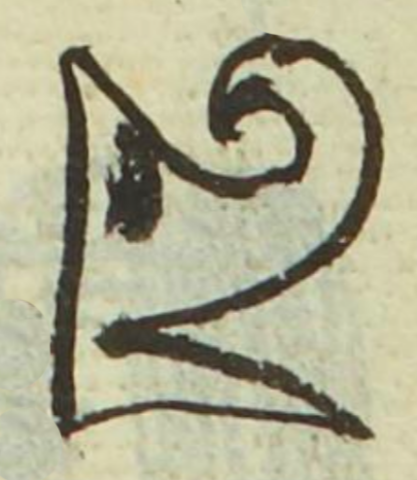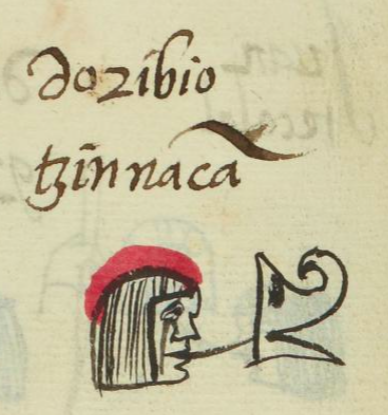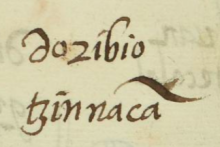Tzinacan (MH504v)
This simplex glyph for the personal name Tzinacan ("Biting Bat," attested here as a man's name) shows the head of an apparent bat in profile, looking toward the viewer's right. Its eye and mouth are open. The upper lip of the animal has a distinctive upward curl to it.
Stephanie Wood
The nose of a vampire bat does turn up, visibly so when viewed in profile. See other bats, below. Both "tzinacan" and "tzinacantli" appear to be terms that were in use. One is obviously a shortened version of the other, and perhaps it was popularized by the use of the name.
See Miguel Ángel Ruz-Barrio's study of the bat in the book he coedited with Juan José Batalla Rosado, Los códices mesoamericanos (2016). A drawing of this glyph appears on page 201.
This Nahua name is preceded in the gloss by a Christian first name (Toribio). He may have been named after Toribio de Benavente, also known as Motolinia ("One Who is Poor or Afflicted"). This was the first word he learned in Nahuatl, and he went on to learn the language well. He lived in the monastery in Huejotzingo. Doing a quick search for the name "Toribio" will produce an impressive result.
Stephanie Wood
doribio
tzinnacā
Toribio Tzinacan
Stephanie Wood
1560
Jeff Haskett-Wood
bats, biting bats, murciélagos, vampire bats, nombres de hombres

tzinacan, a biting bat, https://nahuatl.wired-humanities.org/content/tzinacan
tzinacan(tli), a biting bat, https://nahuatl.wired-humanities.org/content/tzinacantli
-can (locative suffix), https://nahuatl.wired-humanities.org/content/can-2
el murciélago
Stephanie Wood
Matrícula de Huexotzinco, folio 504v, https://www.loc.gov/resource/gdcwdl.wdl_15282/?sp=88&st=image
This manuscript is hosted by the Library of Congress and the World Digital Library; used here with the Creative Commons, “Attribution-NonCommercial-ShareAlike 3.0 License” (CC-BY-NC-SAq 3.0).





